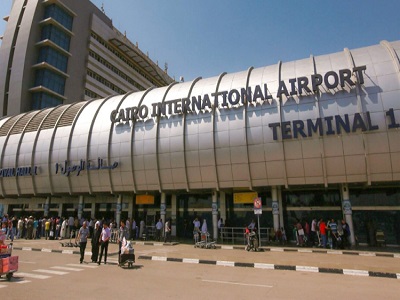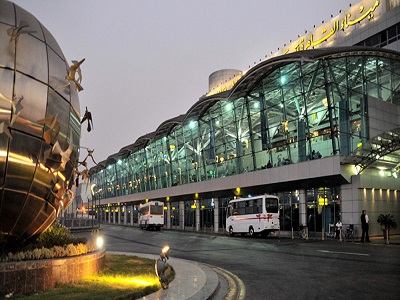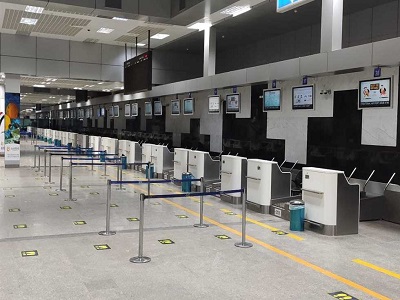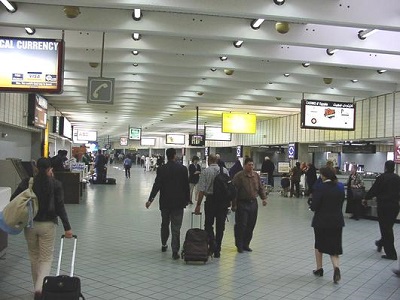Cairo International Airport
Cairo
International Airport history started in the forties of the last century when
the American Bayn Field air-force base was established five kilometers from
Almaza Airport to serve the Alliance during the Second World War. The American
forces left the base by the end of the war.
In
1945, the Civil Aviation Authority took over the base and allocated it to the
International Civil Aviation. The Airport was called "King Farouk 1st
Airport". In the meantime, Almaza Airport was dedicated to the domestic
flights.
In
1955, some studies were done to build a new terminal with a higher capacity;
the location of the new terminal was chosen between the two runways, east of
Cairo. The construction work started in 1957 and was inaugurated on March 18th,
1963.


In
1963, Cairo International Airport replaced the old Heliopolis Airport located
at the Hike-Step area in the east of Cairo. It consisted of arrival and
departure halls, a transit hall and two runways with a capacity of five million
passengers a year.
With
the increase in Air Traffic Movement and the demand for international service
standards, there was a need for developing the airport's facilities. As a
result, Cairo Airport Company started a major renovation and development plan
on the transit hall in Terminal 1. It has been finished by the end of 2003 with
a cost of US $ 12, 000,000. The consultant designer company for the project is
ECG "Engineering Consultants Groups" S.A. Cairo, Egypt.
The
building consists of a ground floor, first floor and a mezzanine. The scope of
work has been divided into three phases. The 1st phase was the renovation of
the ground floor and has been completed in March 2002 and during the
implementation of this work the airport processed normal operations. The ground
floor contains the main access doors, bar, cafeteria, main duty-free shops,
boutiques, and transit/ transfer facilities.
The
second phase, started during June 2003, as a development of the upper floor,
which includes lounges, cafes and the car parking area. First and business
class lounges will be located in the mezzanine floor. For economical class,
travelers will pay for lounges, each lounge reveals a different theme; Italian,
British, American, French and Arabic. In addition, there will be luxurious VIP
lounge to suit all tastes.


The
third phase, that was completed by the end of 2003, includes the completion of
a 1960's cafe overlooking the runway as well as duty free shops.
There
are other facilities in the airport as: both international and national
telephone services, screens and monitors with detailed flight information,
telephones for passenger's inquiries using IVR, banking facilities, rent cars
companies, information desks, post office, pharmacy, clinic, disabled traveler
facilities, baggage trolleys, and porters are also available.
Amongst
the new services, a new VIP Arrival and Departure Hall, has been constructed
outside the airport with a capacity of 180-200 passengers per hour. The new
hall mainly serves the first-class passengers and businessmen who want to pay
more but to have rest in luxurious lounges while their papers and luggage are being
checked.


Terminal
3, which is allocated for domestic flights, has been upgraded into an
international hall. There is also a multi-story underground garage had been
constructed to serve those who need long-time parking.
Source:
Cairo International Airport Website


